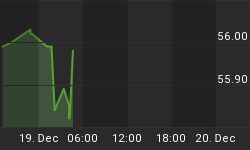After the current turmoil in the markets, I was hoping that new Federal Reserve Chairman Ben Bernanke would see the big picture and act judiciously. Instead he signaled, with an aggressive rate cut, that we can expect a continuation of the monetary policies that got us here to begin with. Alan Greenspan released his memoir this week explaining his policies and decisions in the wake of the irrational exuberance they fueled. His successor should see that it is now time for a change of policy that addresses the root of our troubles. But instead of seeing an inflation problem, the Federal Reserve sees a liquidity problem, which is a little like extinguishing a forest fire with gasoline. In the wake of the rate cut, the Dow jumped and brokers cheered. Behind the headlines, however, the dollar quietly fell and was abandoned by more of the world in favor of more solid stores of wealth.
The Fed does not act in a vacuum. Mr. Greenspan rightly criticizes Congress and the administration for abandoning principles of fiscal responsibility. However, monetary policy at the Fed did nothing solve money problems, but merely delayed impending crises by creating bubbles.
In a very real sense, the Fed and the government are close to going over the spending limit of our nation's credit card. We rely on foreign investors to buy our debt so our government can maintain its appetite for spending. Yet the market for US Treasury Bills is rapidly shrinking as yield declines. Still the government will need an estimated $100 billion more for every year we "stay the course" in Iraq, not to mention what a possible conflict in Iran could cost.
Yes, the money has to come from somewhere, but we are running out of sources to tap.
Printing more money is the Fed's typical answer, but we are on the verge of runaway inflation. We have printed so many dollars now that we are at parity with the Canadian dollar for the first time since 1976. Since the Fed stopped publishing M3, which tracks the total supply of dollars in the economy, we can't even be sure how many dollars they are creating. Reported inflation is around 2%, but the method for calculating inflation changed in the 1980's, largely at Mr. Greenspan's urging. Private economists using the original method find actual inflation to be over 10%, which matches more closely the pain consumers in the real economy feel.
The reality is that this type of manipulation of the markets masks where resources, or money, ultimately comes from. It comes from the taxpayer. The government doesn't create Gross Domestic Product, they just limit and control how it is done. They then absorb much of the value produced in the economy through taxation and inflation, so they can squander our nation's wealth with runaway spending.
The Fed tries to keep up with government's spending habits, but is sending inaccurate signals to mask bad monetary policy. Ultimately, we'll get back on track financially only when government spending is held in check and the free market controls monetary policy, not the other way around.
















